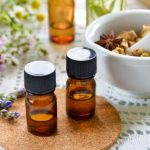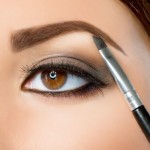 Myth: a widely held but false belief or idea. Beauty myths, we’ve all heard them, sometimes we believe them, but what is true and what’s not? We’ve taken 12 common beauty myths and busted them.
Myth: a widely held but false belief or idea. Beauty myths, we’ve all heard them, sometimes we believe them, but what is true and what’s not? We’ve taken 12 common beauty myths and busted them.
Myth 1: Chocolate causes spots and acne
How many times did I hear this as a pre-teen and teenager? More times than I can count! Maybe parents use this old wives’ tale as a way of trying to scare their pre-teens and teens into making healthier snack choices by instilling the fear of a breakout. Yes, sudden fluctuations in our blood sugar may increase the activity of the sebaceous glands (oil glands), but there’s no direct link between chocolate and spots or acne. Spots and acne breakouts tend to be caused by bacteria, dirt, and make-up trapped in the pores, and hormones may also play a role in causing the odd breakout.
Myth 2: Steaming your face opens your pores
There seem to be quite a few myths surrounding pores. Surprisingly, you can’t really shrink them (products only make them appear smaller by disguising them), and neither can you open them up. Steam simply helps to soften and loosen any dirt, grime and impurities that may be stuck on your skin or in your pores, allowing you to remove it or wash it away easier. Your pores still remain the same size as they always were, they’re just cleaner, so they look less visible.
Myth 3: Your skin should be squeaky clean
If your skin squeaks, it means you’ve over cleansed and have completely stripped the mantle; the natural barrier that protects your skin. After making your skin squeaky clean, you’ll probably find that it feels dry, tight or rigid, and this is a definite sign that your cleanser is not suited to your skin type and that you need to find a more gentle cleanser. For more about cleansers suited to your skin type, read Cleansers, Toners and Moisturisers.
Myth 4: Natural skincare products are better
Uh, nope. Just because it says its natural doesn’t mean that it is better for your skin. Natural ingredients like essential oils can be extremely irritating to the skin and can cause allergic reactions or contact dermatitis. Certain natural products are comedogenic, meaning they clog pores (for example, coconut oil). Just because a product label says its natural doesn’t mean that it actually is natural. Many products containing ‘natural’ ingredients are actually misleading, and if you look closely at the label, they contain very few truly natural ingredients, or only a small percentage. Rather use whatever skincare and cosmetic products that work best for your skin type.
 Myth 5: Bold brows are best
Myth 5: Bold brows are best
Thankfully, more natural-looking brows seem to be back in fashion, but this doesn’t mean that thick, dark eyebrows suit everyone. If you have naturally thinner eyebrows, trying to make them look thicker could throw off the entire balance of your face. Rather groom what you have and fill in any gaps using an eyebrow pencil or eyeshadow powder that is one to two shades darker than your natural hair colour. Nature seems to know best when it comes to your eyebrow shape and colour.
Myth 6: Don’t use your fingers to apply make-up
I use my fingers all the time to apply my own foundation to my face. I find that some foundations actually spread and ‘melt’ better onto my skin with a little help from the body heat in my fingertips, as it warms up the product and makes it easier to spread. Just make sure that if you do use your fingers to apply foundation (or any make-up or cosmetic product) to your face, that you wash your hands first. You wouldn’t want to accidentally give yourself a breakout by introducing naturally occurring bacteria into the mix.
Myth 7: Foundation and Concealer first
This one is actually a matter of personal preference. There’s no right or wrong way when it comes to applying your foundation and concealer. Some people prefer to do their eyeshadow first, before applying foundation and concealer, others prefer to do their foundation and concealer before applying eyeshadow. My advise would be if you’re going for a natural or nude eye, then it doesn’t really matter what order you do it in, as there won’t be much eyeshadow fall-out. If you’re going for a smokey, dark eye, or using glittery or shimmery eyeshadow, then there’s more chance of eyeshadow fall-out, in which case I’d suggest doing the eyes first, then foundation and concealer. This simply means that its easier to clean up any fall-out that lands on your cheeks without messing up your carefully applied foundation and concealer.
Myth 8: Nails need a break from polish to breathe
No, they don’t! There is no reason to believe that nails need to “breathe”. Nails aren’t alive and they don’t have lungs, nor do they have any ability to absorb air into the nail plate. This myth makes no sense on many levels! In short, nails do NOT require an external air supply and do not breathe or exhale. 100% of the oxygen needed by the nail matrix to create a new nail plate comes from the blood stream and 0% comes from the outside world. Everything the nail plate needs to properly grow and function is delivered and/or removed by the blood flow to the matrix area and nail bed. The matrix is where the nail plate is created from nutrients which can ONLY be delivered by the blood stream. Neither “air” nor “nutrients” can be absorbed or “fed” to the nail plate from any external source. Moisture and natural nail oils leave the nail bed and pass through the nail plate at slower than normal rates, but they aren’t “trapped”. The nail plate’s moisture content is increased by 10-15%, and the oil content increases only slightly; both serves to increase the flexibility of the natural nail plate. Waste products are removed from the matrix area and surrounding tissues by the blood as well, and are not released into the nail plate. Normal, healthy nail plates would continue to grow and thrive in a completely air-free environment, as long as a healthy flow of blood to the nail is maintained, so clearly, nails don’t need to breathe. (source: Doug Schoon, Scientific Expert).
Myth 9: Shaving makes your hair grow back thicker
Shaving cuts your hair, so instead of naturally growing out a fine, tapered point, it’s forced to grow out a blunt end. It’s this wide, blunt end that gives the appearance and feel of the hair being thicker. It’s just an illusion.
Myth 10: Brushing your hair with 100 strokes will make it shiny and healthy
Brushing your hair with 100 strokes may make it appear shiner, but this is only because the natural oils from your scalp are more evenly distributed through your hair. If you have oily hair, it will make your hair appear even more greasy that usual. It’s best to brush your hair only when you need to, like when you’re styling it. Unnecessary brushing can lead to breakage, frizz, and split ends. Don’t use a brush on wet hair, as your hair is very fragile when it’s wet, a wide toothed comb or gentle detangling brush is best for this job.
 Myth 11: Your hair gets used to shampoo
Myth 11: Your hair gets used to shampoo
Your hair is made up of keratin cells (the same as your nails), which are effectively dead cells. These cells don’t breathe, they don’t feel and they certainly don’t know what kind of shampoo you’re using! If you’ve found a product that works for you, keep using it. It will perform the same way week after week, month after month, year after year. Although in saying that, if you do use a lot of product in your hair (like mousse, waxes, gels, hairspray, etc), you may need to use a clarifying shampoo once every two weeks, just to get rid of any product residue that may be sticking to your hair and scalp that your regular shampoo can’t lift and get rid of.
Myth 12: Regular hair cuts or trims make your hair grow
Why would cutting something that is dead make it grow? Hair is made up of dead keratin cells, which is why we don’t feel anything when we cut our hair. The only part of our hair that is alive is the root, which is embedded and protected inside the scalp. Regular trims do remove and prevent split ends, which gives hair the appearance of looking healthier, but it doesn’t affect the way it grows.










Leave a Reply
You must be logged in to post a comment.